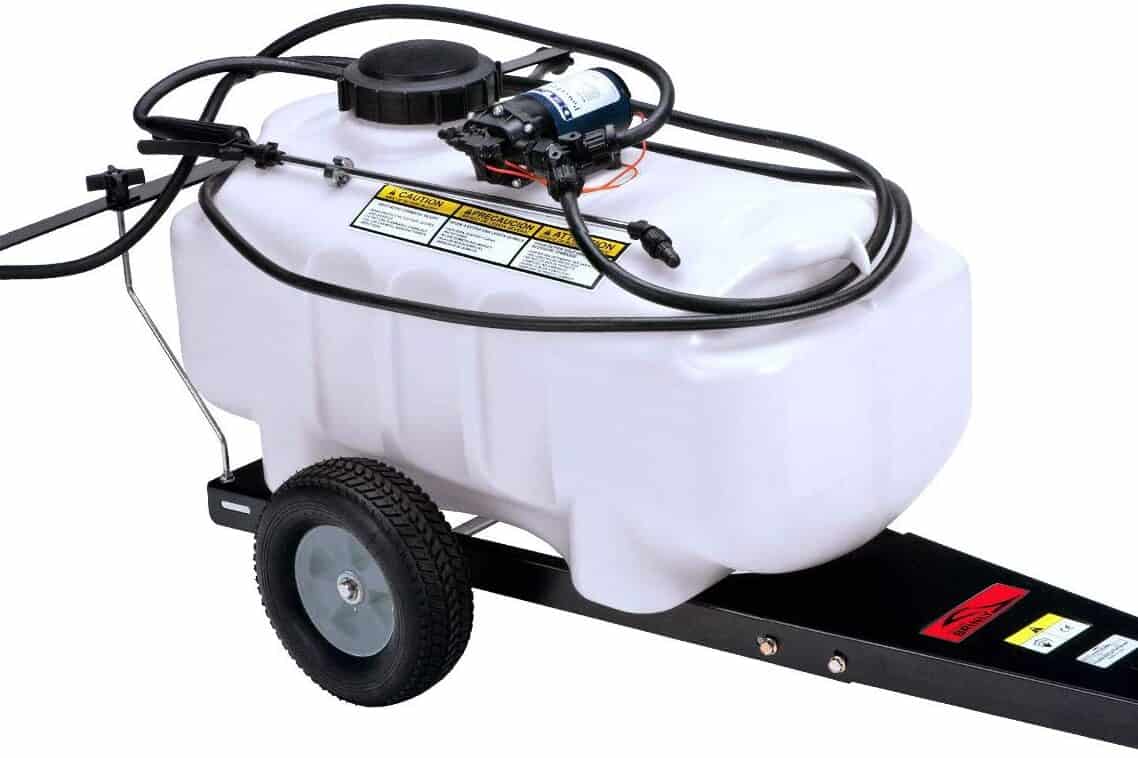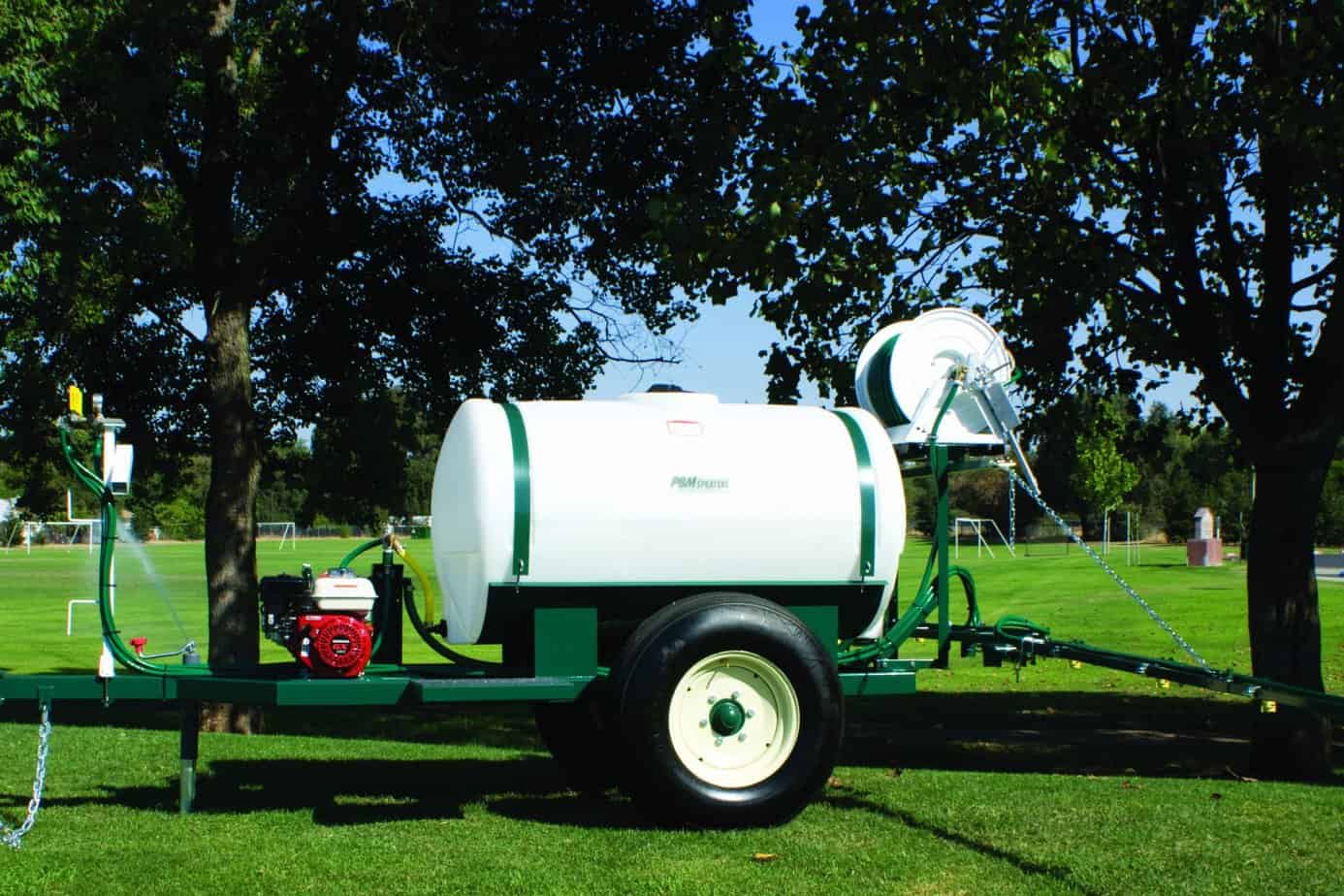Do you know the uses of a lawn and garden sprayer? What should you do if it isn’t working? This article will provide an answer to your query. Check to see if you’ve already read this Riding Lawn Mower Weed Sprayer accessories.
What is it?
A sprayer is a device used to spray a liquid, where sprayers are commonly used for projection of water, weed killers, crop performance materials, pest maintenance chemicals, as well as manufacturing and production line ingredients.
Wikipedia
A tow-behind sprayer is one that can be towed behind a vehicle such as a lawn mower. You can find how much is a lawn and garden sprayer.
Tow behind sprayers are designed for specific vehicles, so whether you want to use your lawn mower, lawn tractor, or truck, a tow behind sprayer will work with it.
Read this for the answer.
Use a Lawn and Garden Sprayer in 7 Ways
A tow-behind trailer sprayer is a piece of extraordinarily flexible equipment, with a built-in hand sprayer for spot spraying and boom-mounted nozzles for blanket coverage.
Due to its capacity and agility, it can cover enormous areas that would be impossible to cover with just a hose end, pump, or backpack sprayer.
This collection of tips will help you get the most out of a lawn and garden sprayer.
Fertilize
Liquid fertilizer is more easily absorbed than powdered fertilizer, and it almost eliminates runoff.
We may alter nitrogen, phosphorus, and potassium (NPK) ratios and add micronutrients or pesticides as needed by spraying liquid fertilizers instead of granular fertilizers with a lawn sprayer.
Insecticide
Pests attack lawns, gardens, and outdoor living areas on a regular basis: grubs, ants, caterpillars, mosquitoes, aphids, mites, roaches, chiggers, and the list goes on.
Using either the boom or the hand applicator on a lawn and garden sprayer, we can apply pesticides generally to the lawn, directly to plant foliage, or around the footprint of the house.
Herbicide
Our lawns are constantly under attack from weeds of various kinds, in addition to insects. Many different herbicides may be required to battle this tremendous diversity in order to attain the healthy, consistent appearance we desire.
To avoid dandelions and crabgrass, use the boom to apply pre-emergent herbicides to the entire lawn.
Removal of Snow
During the winter, a lawn and garden sprayer can be used as an ice melter and de-icer! A back-breaking day of shoveling and icebreaking can be turned into a short tractor ride by applying salt brine or liquid de-icer to driveways or sidewalks.
Hand-spray frozen garage doors, mailboxes, patio furniture, or automobile tires with the hand sprayer.
Watering
Watering is a seemingly apparent function of a lawn and garden sprayer that is frequently overlooked. There’s no need to get out the hose or sprinkler; simply fill the tank and go.
Use the boom’s spray nozzles to cover vast sections of the grass, or sprinkle the flowerbeds with the hand sprayer. Back the tank up to a tree and unscrew the drain cap for high-volume flow.
When you mow, pull the sprayer behind you and water at the same time.
Liquid Lime
This concentrated limestone solution is used to improve the pH of soil and provide the secondary nutrition calcium that is sorely lacking. The liquid variant, which is usually administered in granular form, can be absorbed by the lawn more quickly.
Fungicide
To prevent infections from taking hold, contact fungicides can be used as a preventative approach. A systemic fungicide will be required if the lawn is already affected.
Systemic fungicides destroy the fungus by entering the plant and passing through the vascular system. Liquid fungicide sprays can manage most types of algae, moss, brown patch, mildews, dollar spot, and other funguses.
Tips for you. After you use a lawn and garden sprayer, you must clean the tow behind sprayer.
What should you do if it isn’t working?
Repairing a Lawn and Garden Sprayer

A lawn and garden sprayer is a common lawn care item that can be used for a range of treatments. It allows a pressured stream of a mixture to cover a particular area, such as grass seed and fertilizer.
A lawn and garden sprayer is also effective for weed control since it can apply herbicides and other chemicals directly to weed clumps without harming other plants.
Simple remedies will typically increase the performance of your lawn sprayer if it is suffering any common technical troubles.

One
If your lawn sprayer’s plunger cup is harder to pump than usual or isn’t adequately pressurizing the tank, lubricate it with petroleum jelly. If lubrication doesn’t work, you may need to replace the plunger cup.
Two
If the seal between the water tank and the hose begins to leak, tighten the cap nut at the connection. Tighten the cap nut with a socket wrench.
If the hose keeps leaking, it could be due to a faulty O-ring. Inquire with the maker of your garden sprayer regarding the correct O-ring replacement.
Remove the hose from the tank and disconnect it. Remove the rubber O-ring with an O-ring remover and replace it with the new hose O-ring.
Three
When you have problems with water flow, look for obstructions or pressure points in the hose. While the garden spray is turned off, straighten the hose. Turn on the sprayer and check the nozzle for water flow.
A loose nozzle pressure adjuster or low battery power, if your sprayer is battery-powered, might also create water flow issues. Tighten and replace your sprayer’s batteries by turning the nozzle pressure adjuster clockwise.
Four
If the spray solution backflows into the pump cylinder, clean the check valve or mono valve on your garden sprayer. Remove the check valve and use a clean rag to wipe down the sides and bottom.
Backflow could also suggest a faulty check valve, which should be replaced if necessary.
Five
If you have leaks from the on/off switch or your sprayer continues to spew water after being turned off, clean the shutoff valve on your lawn sprayer. Remove the shutdown valve and use a clean rag to wipe the surface.
A damaged O-ring for metal valves or a cracked plastic valve can also create leaks of this nature. Replace any O-rings or valves that are damaged.
Sum Up
A lawn and garden sprayer can be utilized in a variety of ways, depending on your needs. Repair suggestions For information on troubleshooting procedures, consult your model’s owner’s manual.
Use these steps to assist you in determining the problem that needs to be fixed. Ready to use a lawn and garden sprayer?
More Related Articles
A lawn and garden sprayer


